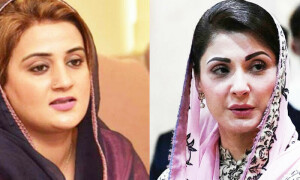KARACHI: The overreliance of the broadcast media on advertisement has created a “politico-economic problem” which can be solved by replacing at least part of this revenue stream with subscription-generated income, a working paper released on Thursday said.
In the working paper titled “Understanding Broadcast Media Economics in Pakistan” that the Pakistan Institute of Development Economics (PIDE), economists Fahd Zulfiqar and Fida Muhammad Khan said the media has aligned itself with commercial enterprises and political and non-political organisations, resulting in its disengagement with consumers (of news) and a loss of credibility.
As many as 100 functional TV channels and 150 radio stations existed in 2019. Between 2002 and 2019, the number of journalists increased from 2,000 to more than 20,000 while the overall increase in the number of people associated with the media industry went up to about 250,000.
“The expansion in the media industry is the result of an increase in per capita income, consumer economy, advertising sector and expansion of the private sector,” it said, noting that the country’s electronic media industry received a cumulative investment of $4 billion between 2002 and 2017.
When the broadcast sector was opened for private ownership in 2002, it depended heavily on ad revenues from private sector companies such as telecom firms. The situation “drastically changed” later, particularly in 2018, as ad revenues for print and electronic media shrank notably. Private-sector players such as banks, textile makers and telecom firms cut down their advertisement budgets by 50 per cent, the research paper said.
The size of advertisement grew from Rs 66.9bn to Rs87.7bn between 2015 and 2017 but ad budgets shrank significantly 2017 onwards. The Punjab and Sindh governments cut down their ad budgets by 70pc in 2018.
Pakistan’s TV ad spend decreased 7pc in 2020, 26pc in 2019 and 9.5pc in 2018. In contrast, the digital ad spend increased 30pc in 2020, 31pc in 2019 and 45pc in 2018.
Of the 15 top-earning channels in 2017-18, seven broadcast news and eight were entertainment channels. Geo and Dunya news channels raked in Rs4.5bn (17pc) of the total Rs26bn ad revenue of the entire TV sector.
Citing prior research conducted by Aurora, a Dawn Media Group publication, the working paper said TV had the major share of ad spend (42pc) in the total ad revenue of Rs67bn in 2018-19. It was followed by print (20pc) and digital (12pc) with cinema securing only 1pc share. All forms of media, barring digital and out-of-home advertising, showed a decline in their ad spend in 2018-19 from a year ago. “The comparison reveals a decline of 18pc in total ad spend in 2018-19 with 2016-17 as the base year.”
Major advertisement sources for the media in 2017-18 included the federal government, real estate companies, educational institutes, financial sector and pharmaceutical firms.
The working paper took a critical view of the country’s television audience measurement or TAM system. Gallup Pakistan and Medialogic are the two TAM-operating organisations in Pakistan. Gallup Pakistan collects data from 4,800 urban and 700 rural centres.
Published in Dawn, August 6th, 2021















































Dear visitor, the comments section is undergoing an overhaul and will return soon.